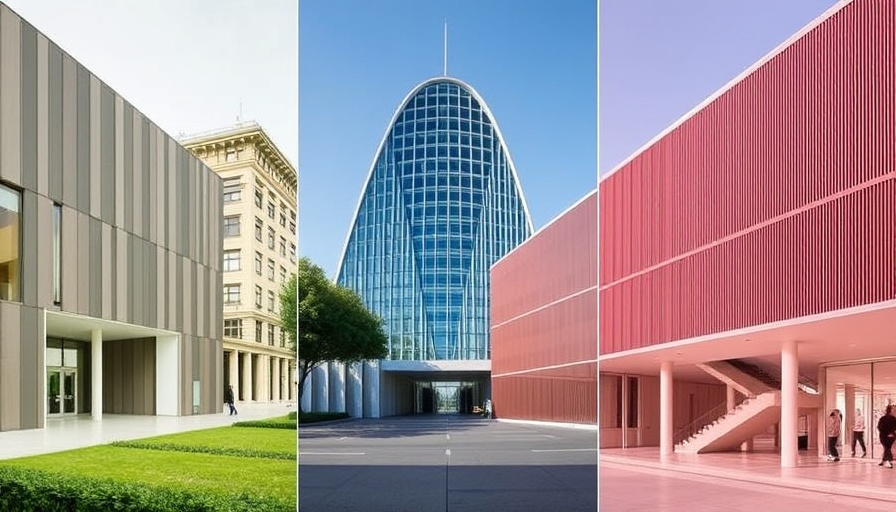
Discovering the Intersection of Design and Comfort
In today's fast-paced world, where digital nomadism is on the rise, the architecture and design landscape continues to evolve, aiming to meet the needs of those who work remotely. Throughout June 2025, a series of exhibition events celebrate innovative designs and ergonomic solutions tailored for comfortable remote workspaces. With gatherings like the London Design Biennale and Design Shanghai, we see not just furniture, but also the essence of productivity infused into every design.
Antwerp Design Week: Celebrating Creativity Across Five Districts
From June 1 to 5, Antwerp Design Week will showcase the creations of over 80 brands within five distinct districts of the city. This event aims to integrate unique designs with a community-centric approach, presenting open showrooms and workshops. For digital nomads looking for inspiration, this setting is filled with ideas that intertwine art, utility, and innovative workspace designs, giving participants a glimpse into creative solutions that cater to remote workers.
London Festival of Architecture: A Month to Inspire Innovation
The London Festival of Architecture, taking place throughout June, explores the theme "Voices" in its 21st edition. This focus reminds us of the profound impact architecture can have on diversity and community engagement. From installations to discussions, the festival emphasizes designs that promote equitable workspaces, essential for those who work remotely. Participants can reflect on how their physical environments influence productivity and well-being.
Design Shanghai: A Hub for Innovation and Exploration
Running from June 4 to 7, Design Shanghai exemplifies the pinnacle of modern design, featuring innovative products categorized into several key areas, including Furniture, Kitchen, and Lifestyle. For the remote worker, this event is a treasure trove of ergonomic furniture that integrates aesthetics with functionality. The opportunity to see international brands and network with designers highlights new trends aimed at improving work conditions.
London Design Biennale: Where Global Ideas Take Shape
Beginning on June 5 and running until the 29th, the London Design Biennale will unfold at Somerset House, showcasing over 40 pavilions that delve into the theme of "Surface Reflections." This iteration, under the artistic direction of Samuel Ross, invites conversations about how design can transform spaces for work and collaboration. The event is a jewel for remote workers seeking to rejuvenate their workspaces with fresh ideas that push the boundaries of traditional design.
NeoCon: A Platform for Interior Design Excellence
Set in the iconic Mart in Chicago from June 9 to 11, NeoCon is a hallmark event for the workspace design industry. With around 450 companies participating, it features a comprehensive lineup of products tailored toward commercial interiors, emphasizing the blend of design and technology. For digital nomads, NeoCon is a reflection of how interior spaces can evolve to support multifaceted lifestyles that demand flexibility, efficiency, and comfort.
3 Days of Design: Denmark’s Creative Showcase
Finally, from June 18 to 20, Copenhagen will host 3 Days of Design, celebrating its 12th edition under the theme "Keep it Real." This festival combines talks, workshops, and open showrooms to explore authentic design that resonates with modern values. It encourages reflection on how sustainable workspaces can enhance focus and productivity, particularly beneficial for those working from various locations.
Embracing Innovation: Shaping the Future of Work
As remote work continues to reshape the economic landscape, these events provide invaluable insights into creating effective work environments. Attending these exhibitions is not only an opportunity to discover cutting-edge designs but also to engage in meaningful dialogue about the future of workspaces. Embracing ergonomic solutions and design innovation is essential for optimizing productivity and well-being in our evolving work culture.
Consider exploring these events for fresh inspiration that can enhance your home or remote workspace. By staying informed on design trends and ergonomic practices, you can transform your work environment to better support your productivity and wellness.
 Add Row
Add Row  Add
Add 




Write A Comment